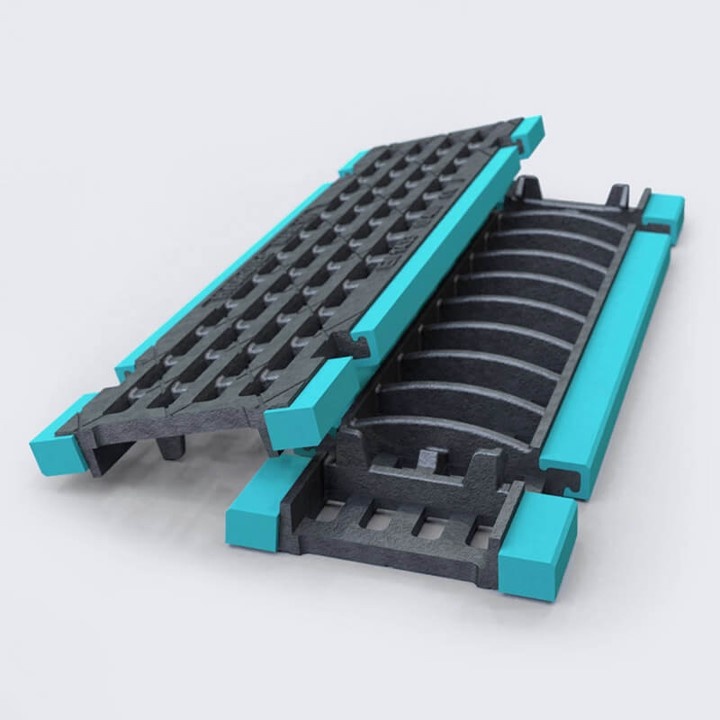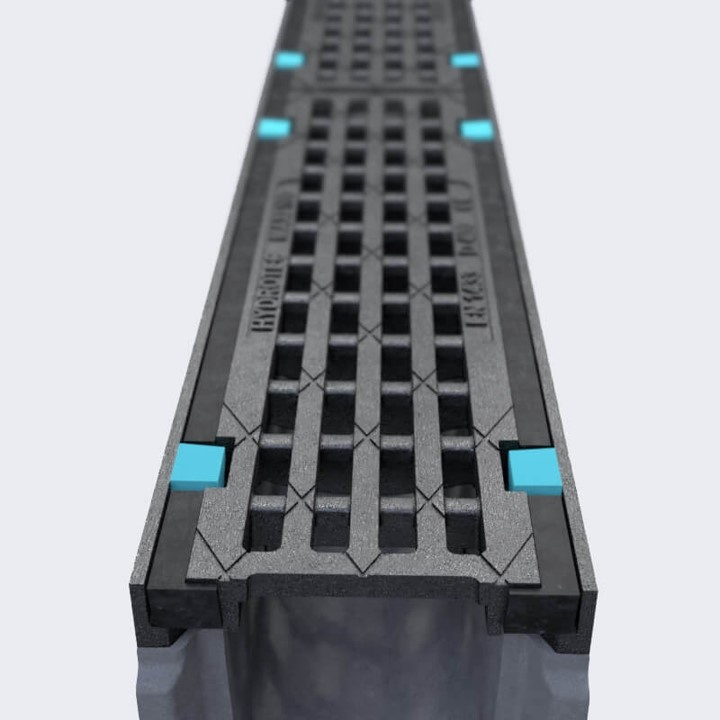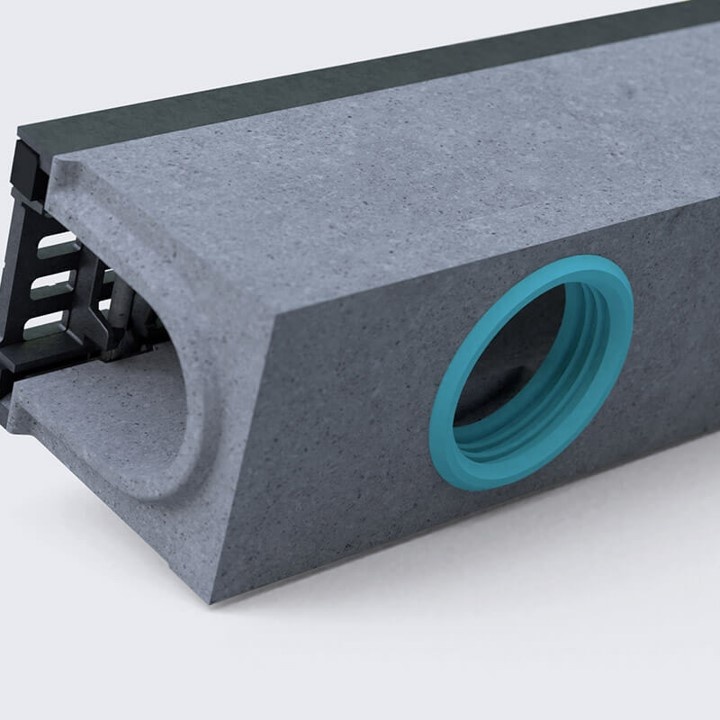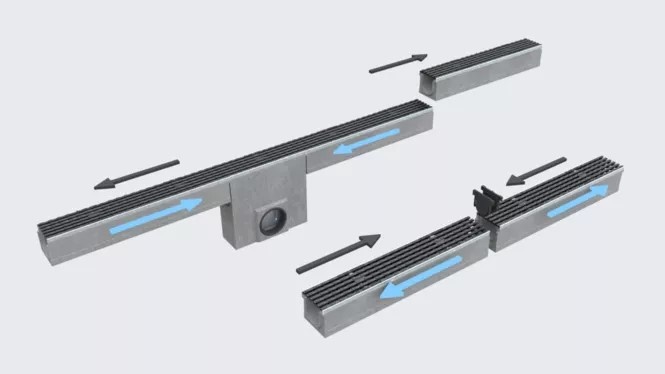You have no items in your shopping cart
In order to better balance the forces acting on our MAXI drainage channel and thus extend the operating time, we have developed the MAXIpur drainage channel. The drainage channel is equipped with the innovative PUR insert, which is already successfully used in our manhole covers. The insert ensures rattle-free operation and thus also reduces the wear values of the channels.
 |
 |
 |
 |
Drainage without rattlingThe casting grate is provided with a firmly encapsulated polyurethane inlay according to the proven HYDROpur® system. The PUR coating of the grate prevents contact of the cast grate with the cast frame and thus ensures rattle-free operation.
|
ExchangeThe covered grating can be replaced without much effort by other gratings of the MAXI drainage channel.
|
Minimal wearThe insert provides a better balance of forces and less wear of the materials. Depending on the load of the channel, this provision allows longer operating times.
|
Good resistanceThe PUR insert meets the following resistance:
|
More benefits
 |
 |
 |
Screwless lockThe covers are equipped with a simple locking system, which can be locked and unlocked using the mounting rod (accessory).
|
Protection against length shiftThanks to 8 anti-slip points per linear metre, the braking forces in the longitudinal direction are excellently absorbed and transferred.
|
Drain elementLiquid-tight connection (incl. sealing ring) for a plastic pipe.
|
Installation direction
| The installation direction of the gutters is always against the flow direction and starts at the connection to the base pipe or at the sand trap element. If the elements are laid in two different directions, the profile groove must be removed with a flex or end walls must be used at the meeting of the elements to prevent a gap. When laying, it must generally be ensured that the individual gutter elements are installed vertically and not pushed against each other! |  |
| Flow direction = blue arrows, laying direction = black arrows |
Principles of Drainage Channel Construction
- All delivered parts must be checked for perfect condition. Damaged parts must not be installed!
- The choice of the most suitable installation method for your case is the responsibility of the commissioned specialist consultancy firm, which has the necessary knowledge to assess the situation.
- The type of installation of the drainage channels depends on the installation locations with the associated traffic load and the planned hardening. The installation locations are divided into classes A 15 to F 900 in EN 1433. From class C, all cover grilles must be secured in a traffic-safe manner. The foundation of the drainage channels must be in accordance with the traffic load.
- Horizontal loads from traffic or the thermal behaviour of the pavement must be absorbed by a sufficiently dimensioned concrete lining of the gutter bodies and by expansion joints that are applied in the longitudinal direction of the gutter, in particular in adjacent concrete surfaces. Joints transverse to the gutter series must always be applied to the gutter joint. The installation direction of the gutters always runs against the flow direction and starts at the connection to the sewer.
- Adjacent paving must be placed 5 mm higher than the surface of the cover grid or edge protection, taking into account subsequent settlement and subsidence. Appropriate measures must be taken to prevent the road surface and gutters from washing away and flooding.
- Where extreme horizontal forces are expected across the drainage channel, e.g. at road crossings, slip roads or on motorways, the drainage channels must be laterally secured with reinforced road surface concrete.
Load classes according to DIN EN 1433
 |
 |
 |
 |
 |
 |
| Class A 15 | Class B 125 | Class C 250 | Class D 400 | Class E 600 | Class F 900 |
| Footpaths, cycle paths, green areas | Pedestrian zones, parking lots | Roadsides, parking spaces | Public roads and parking lots | Industry, defense, high wheel loads | Airports, industrial estates, very high wheel loads |
 Download the MAXIpur brochure here
Download the MAXIpur brochure here


